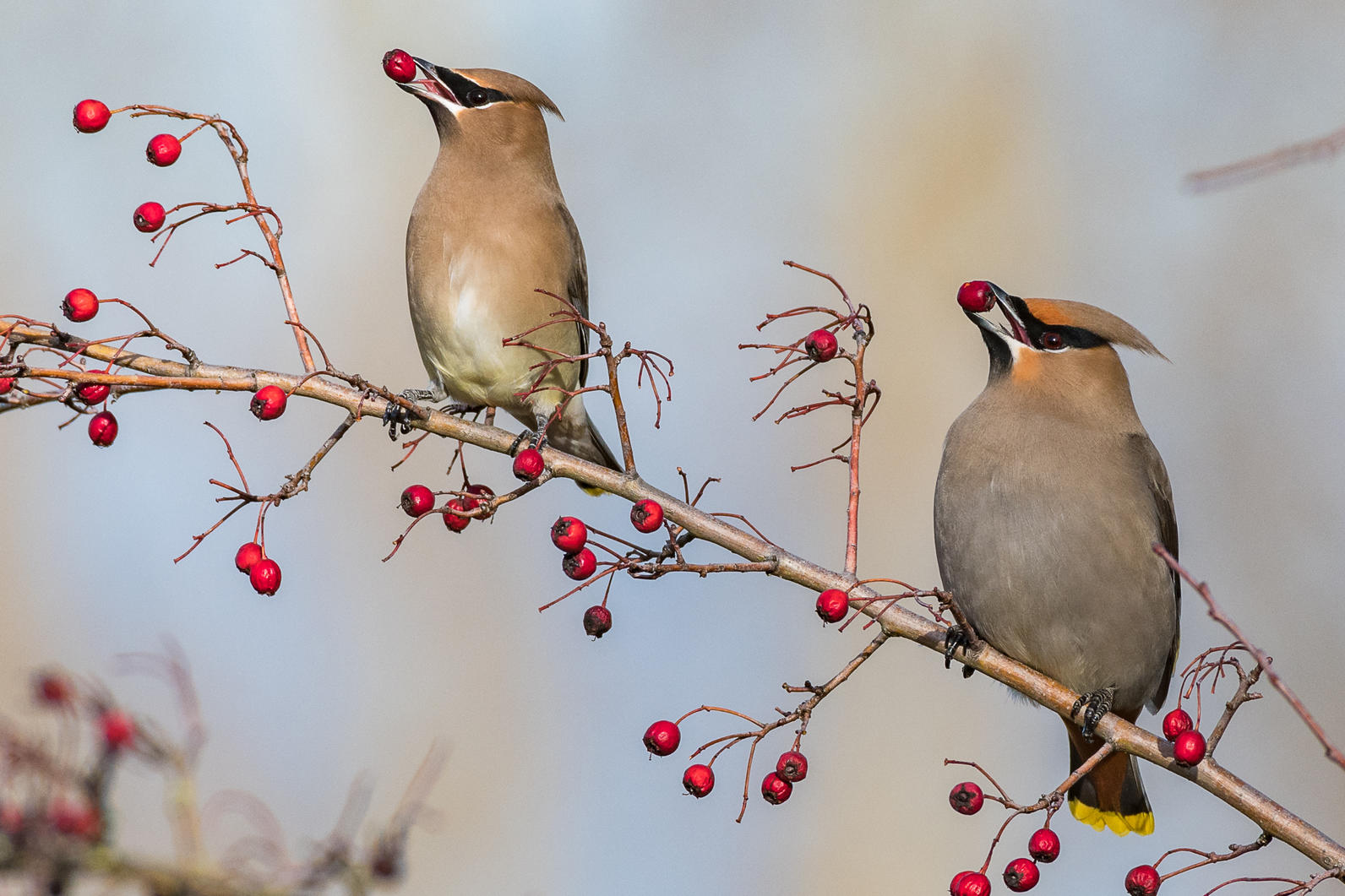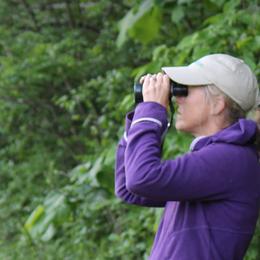Sunday morning on December 16, my alarm went off at 4:30 am. Time to get up for the Audubon Christmas Bird Count (CBC) in Middlebury. I had packed my backpack the night before with warm layers, bird guide, snacks, hand and toe warmers, and binoculars. I was joining members of my team to carpool to Rosie's Restaurant for a pre-count breakfast, so had to be on the road by 5am. I quickly made some coffee, packed more food and hot tea, and headed out in the dark.
Two of my teammates and I greeted many familiar faces at Rosie's - most were Otter Creek Audubon Society members and expert birders. Many of these chapter members volunteer their time for Audubon Vermont projects like our VELCO power line survey, peregrine falcon monitoring, and other community science projects. We met Spencer, the fourth member of our team at the breakfast - he arrived after owling during the pre-dawn hours, and had already tallied Screech, Barred, and Great-horned Owls. After eating and before heading out, we were given our challenges for the day: (1) If we found the most unusual bird, we could win a Cowbird carving by notable bird carver Gary Starr (a white bird with cow patterned spots), and (2) If we saw the most grosbeaks (a species that have "irrupted" south this year), we could win a the pot of $1 "bids" totalling a whopping $35. We headed out with full bellies, lots of caffeine, and the hopes of winning one of the prizes.
Having never done the Middlebury CBC before, I was unfamiliar with the territory we were assigned, but it turned out that some of the area included places and habitats where I have been working with landowners to improve habitat for shrubland birds. We planned to stop by some of these properties throughout the day.
Our day consisted of driving the roads on our route, walking trails where possible, and stopping at peoples' bird feeders along the way. We visited a mix of open land, suburban areas, forest edges, wetlands, and yards. We also visited the Middlebury College composting site. Spencer's eagle eyes in the front passenger seat of the car helped us find several species that were just glimpses - Merlin, Common Redpoll, Rough-legged Hawk, and more. We had a great look at a Cooper's Hawk bothering some robins along a forest edge near the college, a Barred Owl perched in a white pine, 19 different Red-tailed Hawks, and over 100 Bohemian Waxwings perched together in Cornwall Swamp. We looked hard for grosbeaks and found two female Pine Grosbeaks in some fruit trees near the hospital and heard an Evening Grosbeak near the Middlebury science building. By dark we had tallied 39 species.
We put our binoculars away and ventured to coordinator Jim Andrews' house for a celebratory potluck. Everyone compiled notes and data forms while sequestered away from other teams so as to keep sightings secret until we formally revealed our results after dinner. This part of the day was obviously steeped in years of tradition - concealing results while hinting at successes or failures until the formal unveiling. We gathered so Jim could go through the species list, focusing on common species first, while everyone called out results. Jim saved the uncommon species for later, adding drama to the unveiling. When he called out species like Pine Grosbeak, there were pregnant pauses to see who had seen any. Amazingly, our three grosbeaks took the $35 dollar winnings. The most unusual bird went to the team that saw a Fish Crow, a species that is expanding its range north from coastal areas. 2018 was the second year that this species was seen during the count.
In all, there were some interesting results for the Middlebury count. The total number of birds found (15,659) was approximately 300 less than last year’s total but only slightly below the 30-year average of 16,543. Our total of 72 species was five above the average of 67 and well above what would be expected for a count with very limited open water. In 2018 there was only one Snow Bunting found, whereas 1,980 were seen in 2008, and 360 American Tree Sparrows were quite a bit fewer than the 1,274 seen in 2003. In contrast, Red-bellied Woodpecker numbers have steadily increased, with 76 seen in 2018, breaking the previous record of 52.
Weary but well-fed, we headed back to our warm homes with another Audubon Christmas Bird Count completed. I look forward to doing another count next year. Stay tuned for a summary of the Audubon CBC results from the entire state.










